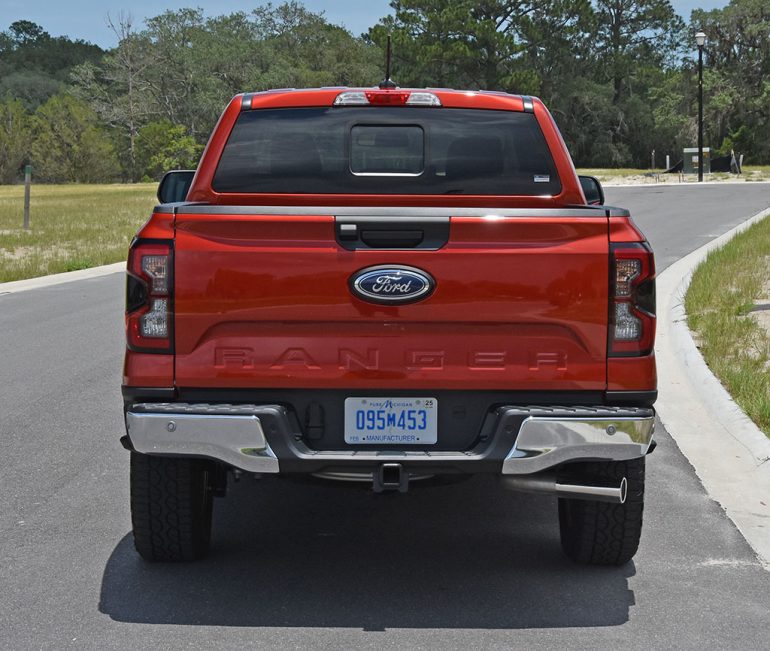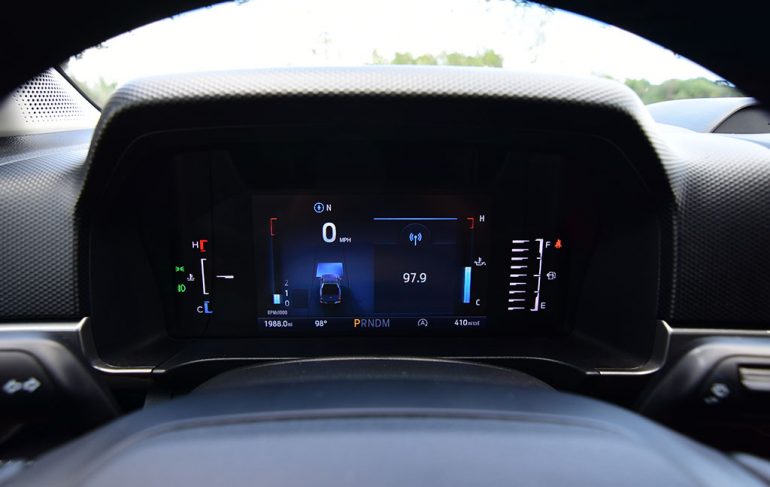
The midsized pickup truck segment has certainly heated up in the past few years with the introduction of updated models and what appears to be more of an effort from automakers to make such vehicles more relevant. Such a movement has been fueled by the rising prices of full-size trucks, giving buyers new, relatively affordable options that attempt to avoid too much compromise. The new 2024 Ford Ranger received a redesign for the model year after its return success from the 2019 model year.
For 2024, the Ford Ranger will receive a full redesign but will keep with the tradition of offering a plethora of trim levels and options to appease buyers who may cross-shop larger full-size trucks. With that, the new Ranger is better positioned than ever before to be on the short list of buyers seeking a capable pickup truck that doesn’t break the bank like some full-size options. Overall, the new Ford Ranger is more than just a baby F-150, it’s now more of a grown-up creation of its own that offers a wide gamut of trims from the base $32,720 XL model all the way up to the rugged and off-road thrashing Ranger Raptor starting at $55,620.
Also, don’t forget that you can get discounted new car pricing with a free quote through qualified local dealer partners.

For this week, I get my hands on the new 2024 Ford Ranger XLT 4×2, which is a respectable mid-level trim that opens the availability of many desirable options. With four trim levels, the new Ford Ranger offers a choice of two powertrains; the brand’s 2.3-liter EcoBoost turbocharged 4-cylinder returns with 270 horsepower and 310 lb-ft of torque, or you can opt for a 2.7-liter EcoBoost turbocharged V6 engine with 315 horsepower and 400 lb-ft of torque. Both engines are mated to a 10-speed automatic transmission.
My test vehicle, the Ranger XLT rear-wheel-drive, has the 2.3-liter turbo engine, which surprisingly proved to be quite the performer with its low-end torque available maxing out 3,000 rpm. The familiar engine, a proven powerhouse for its small size, is also found in the Ford Bronco and EcoBoost Mustang.

Out on the road, the new Ford Ranger feels more planted than before and slightly more rigid, which is a characteristic that some truck buyers may appreciate. After all, you don’t want a soft-feeling truck – you want one that’s capable and rugged, most times. The power comes on strong after a slight turbo lag, and sometimes catches you off guard with the surge of torque at the low end, but eventually, it becomes predictable. The 10-speed automatic transmission helps to amplify the power output, keeping the engine in the power band often. Zero to 60 mph takes place in about 6.4 seconds, which is quite respectable for such a truck and notably quicker than competitors such as the Chevy Colorado and the new non-hybrid Toyota Tacoma.

The off-roading prowess of the new Ford Ranger returns with an edge for those who opt for four-wheel-drive or the aggressive Ford Ranger Raptor, which gets the more powerful turbocharged V6 engine and other off-roading oriented goodies. My test vehicle is somewhat limited in its off-roading abilities having the 4×2 setup, but gets a high ground clearance and capable Goodyear Wrangler tires. In all, the new Ranger drives excellently and is more on the firm side for its suspension, but it doesn’t beat you up, which some may appreciate.

Towing in the Ford Ranger gives you confidence in its rating of up to 7,500 pounds and the ability to haul 1,711 pounds in the spray-lined bed with a dampened tailgate. For added convenience, there’s a 120-volt plug in the bed as well as a standard 12-volt.
The new Ford Ranger retains its fuel economy by having the same 2.3-liter EcoBoost engine that matches the EPA-estimated 22 mpg combined driving. The EPA city 21 mpg estimate and highway 25 mpg estimate are on par with what you will expect in the real world as you burn through regular unleaded in the 18.8-gallon tank.

The more drastic change in the full redesign of the new 2024 Ford Ranger is in the interior, where there is a completely new space and dashboard, which somewhat fits the new mold of some Ford SUVs and full-size trucks. The central look plays off the portrait-style 12-inch touchscreen, which is a welcomed setup considering how well it is integrated into the dashboard. The screen doesn’t look like an afterthought as it does in vehicles like the new Ford Mustang Mach E. The functionality of the latest Sync software is good but does require an initial load time that you must get used to, or you will suffer slow system responses to inputs. There’s a welcomed redundancy of automatic dual-zone climate controls having a set of physical buttons and knobs as well as onscreen functions, which I welcome having the versatility. Overall, the system is not the most responsive out there but proves to be welcoming after a slight learning curve in going through a long list of features and functions.

Integration of wireless (or USB-connected) Apple CarPlay and Android Auto fits well to make clever use of the large screen real estate, as does the 360-degree camera system. You can tell Ford put a lot of thought into the development and layout of the infotainment system in using a large vertical-oriented setup.

For the redesign, the Ranger gets an 8-inch digital driver’s gauge cluster that’s surrounded by LED gauges for the engine temp and fuel level. The setup is mostly basic, similar to what you find in the Bronco. It is not until you move to the Lariat or Raptor trims that you get an upgraded digital gauge cluster.

The seating areas are improved over the outgoing generation, mostly in the headroom, providing versatile space and somewhat comfy front heated cloth seats in my Ranger XLT test vehicle. Here, there’s somewhat of a competitive edge in the Ranger considering its clever feature content, having items like a wireless smartphone charger, heated front seats, a larger 12-inch infotainment touchscreen, a power rear window, and dual-zone climate control. The only drawback I found is the lack of a pushbutton start, where you’re required to use the classic key for the ignition, even though there is a remote start feature from the key fob. You are also left to use of the traditional Ford door keypad if you wish to enter the vehicle without using the remote or inserting the key.
The new Ford Ranger bundles up several standard active safety features for the base XL trim that include forward collision warning with automatic braking, lane departure warning, and a single-angle backup camera. Moving to the XLT trim, you get a blind-spot warning, lane-keeping assist, rear parking sensors, and a digital rearview mirror. Equipped on my test vehicle is the option of adaptive cruise control, an automated parking system, front parking sensors, and a 360-degree camera system.

The Ford Ranger keeps with competition for its pricing scale starting at $32,720 for the XL trim. However, you can bundle up several option packages in the XLT trim level, such as the few found on my test vehicle bringing the as-tested price to $43,425.